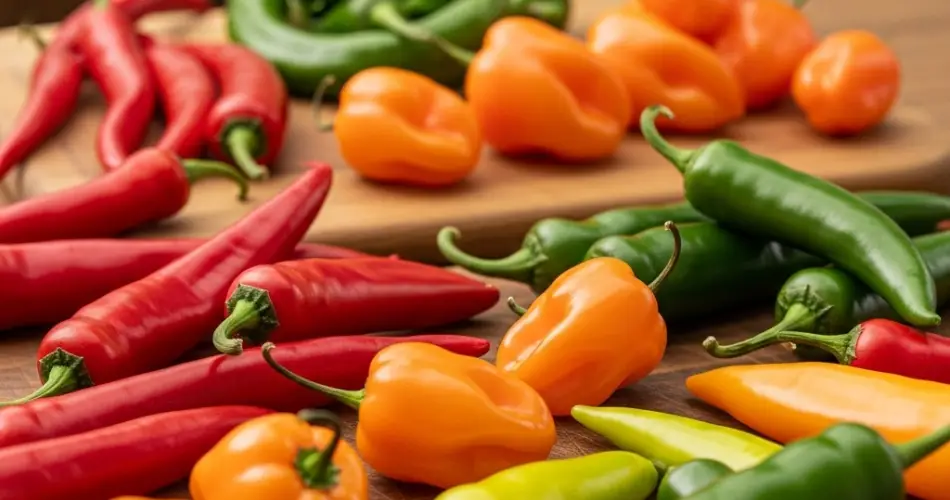Hot peppers are a rewarding crop to grow at home, especially if you have a sunny balcony. With their compact growth habit, vibrant colors, and spicy fruits, hot peppers not only serve a culinary purpose but also make an attractive addition to your outdoor space. Growing them on a balcony is easier than you might think, provided you give them the light, warmth, and care they need. Here’s how you can successfully grow hot peppers in containers right on your balcony.
Choose the Right Pepper Variety
There are many types of hot peppers, from mildly spicy varieties like jalapeños to fiery options like habaneros and Thai chilies. When choosing a variety, consider the size of the mature plant and the climate in your region. Dwarf or compact varieties like ‘Basket of Fire’, ‘Numex Twilight’, or ‘Cayenne’ do especially well in pots and confined spaces. If you have limited room, go for bushy plants rather than tall or sprawling types.
Ideal Growing Conditions
Sunlight:
Hot peppers thrive in full sun. Your balcony should receive at least 6–8 hours of direct sunlight daily. If your balcony doesn’t get full sun, choose early-fruiting varieties and place reflective surfaces nearby to boost light exposure.
Temperature:
Peppers love warm weather and dislike the cold. Wait to plant them outdoors until the nighttime temperature consistently stays above 60°F (15°C). Sudden cold spells can stunt their growth or kill young plants.
Container Selection and Soil
Pots:
Choose pots that are at least 10–12 inches (25–30 cm) in diameter and have good drainage holes. Terracotta, plastic, or fabric grow bags all work well. Larger containers help maintain consistent moisture and provide space for root development.
Soil:
Use a well-draining potting mix enriched with compost. A mixture of standard potting soil, perlite or coarse sand, and organic compost is ideal. Avoid using garden soil, which can be too dense for containers and may harbor pests.
Planting and Spacing
If starting from seed, sow the seeds indoors 6–8 weeks before the last expected frost. Transplant them into their balcony pots when the seedlings have at least two sets of true leaves and the weather has warmed.
If using nursery starts or seedlings, gently transplant them into the containers, keeping the root ball intact. Space plants at least 12 inches (30 cm) apart if you are planting multiple in one large container.
Watering and Feeding
Peppers in containers need regular watering, especially in hot weather. Water deeply when the top inch of soil feels dry. Ensure the pots have drainage holes to prevent root rot from excess moisture.
Feed your pepper plants every 2–3 weeks with a balanced liquid fertilizer or one that’s high in potassium and phosphorus to promote flowering and fruit development. Organic options like compost tea, fish emulsion, or seaweed extract work well and are gentle on the plants.
Supporting and Pruning
As pepper plants grow and begin to fruit, they can become top-heavy. Use small stakes or tomato cages to support the branches and prevent them from snapping. Pruning is optional but can help maintain shape and encourage better airflow around the plant. Pinch off early flower buds if the plant is still small and not well established, so it focuses on root and leaf growth first.
Pollination Tips
On balconies where pollinators might be scarce, you can hand-pollinate your pepper flowers using a small paintbrush or by gently shaking the plant. This helps transfer pollen between flowers and increases fruit set.
Pests and Problems
While container-grown peppers are less prone to soil-borne diseases, you still need to watch for common pests like aphids, spider mites, and whiteflies. Inspect the undersides of leaves regularly. Use natural remedies such as neem oil or insecticidal soap sprays to manage infestations.
Also, avoid overwatering and ensure proper drainage to prevent root rot. Blossom-end rot, a common problem, usually results from inconsistent watering or calcium deficiency.
Harvesting Your Peppers
Most hot pepper varieties mature in about 60 to 90 days. Peppers can be harvested green or left to ripen to their final color for a hotter flavor. Use scissors or a sharp knife to cut the fruit from the plant to avoid damaging the branches.
Harvesting regularly encourages the plant to produce more fruit. If you grow multiple varieties, label them clearly, as they may look similar but vary greatly in heat level.
Final Tips
-
Rotate containers occasionally to ensure even sunlight exposure.
-
Mulch the surface of the soil to retain moisture and suppress weeds.
-
If you live in a cooler climate, consider bringing the pots indoors at night or growing your peppers in portable containers that can be moved easily.
With just a bit of attention and care, your balcony can become a hot pepper haven—offering a steady supply of spicy goodness throughout the season.



